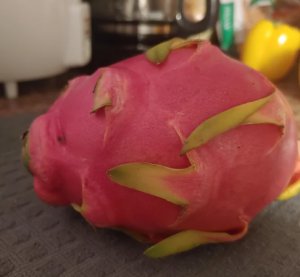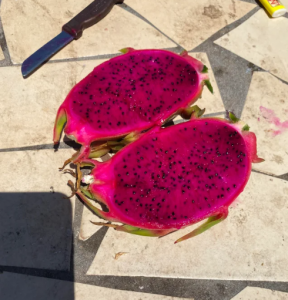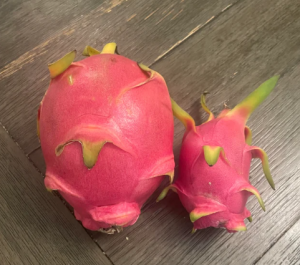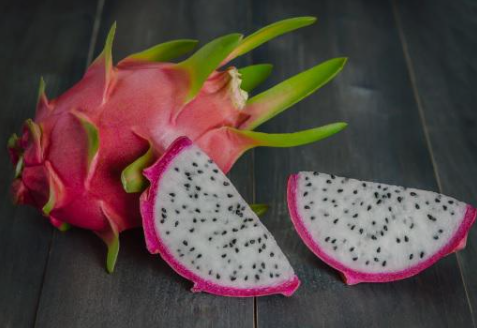When you look at a menu at a juicer or an acai bowl café, you'll usually see pitaya and/or dragon fruit on it. We're talking about those aesthetically beautiful Instagram photos of bright magenta-colored deliciousness!
Once and for all, let's learn the eerily similar but different Pitaya and Pitahaya( Dragon Fruit).
Are Pitaya Or Pitahaya Similar?

Pitaya typically refers to the fruit of the genus Stenocereus, whereas pitahaya or dragon fruit refers to the fruit of the genus Selenicereus (previously Hylocereus), both of which are members of the Cactaceae family.
Dragon fruit gets its name from the leather-like coating and scaly spikes on the fruit's surface. Pitaya fruits can have sweet or sour flesh that is red, white, or yellow, depending on the type.
Where Are They Cultivated?
- Pitaya is native to Central and South America, but it is now cultivated worldwide, particularly in Malaysia and Vietnam, because of its appeal to Asian customers.
- In truth, pitahaya is a fruit that grows on a cactus species native to the Americas. While pitaya grows and flourishes in arid locations, its stem gives moisture to the fruit, which makes it so tasty.
Perhaps They Are A Little Similar
Look no further if you've been wondering if dragon fruit and pitaya are healthy. Pitaya's new name is dragon fruit, the most common term for the fruit!
Dragon fruit has the same texture as kiwi and a comparable, pleasantly sweet taste; the seeds are high in healthy fats and provide a crunchy texture to the juicy superfood.
In terms of appearance, pitaya fruits are most commonly found with green scales, a pink peel, and a white interior coated with black seeds. Pitahayas with a magenta inside covered by a yellow peel are another option.
Also Read: From Soil to Spud: 8 Key Potato Growing Stages
Health Benefits Of Pitaya And Pitahaya?

Digestive Health
Pitaya is considered a superfood due to its numerous health advantages. First and foremost, eating enough pitaya improves your digestive health because of its high fiber content, which keeps your digestive tract clear and clean.
While the center of the fruit is the most tempting due to its sweetness and juiciness, the majority of the fiber in the fruit is found in the skin and seeds, so why not eat the entire thing? It will supply the required fiber to keep your digestive system running normally.
Anti-aging Properties
Superfoods, of course, are high in antioxidants, which keep your skin glowing and young. Instead of using face creams and serums, try eating vegetables like pitaya, which has the same effect! Try the pitaya bowl the next time you visit an acai bowl café; it definitely wins the superfood game regarding antioxidant content.
If you don't like the flavor, you can make a face mask, which will tighten and brighten your skin to your heart's content.
Hair Health
Who knew pitaya could improve the look and feel of your hair so dramatically? It certainly can! The fruit's nutritious makeup assists your hair follicles to remain open, keeping your hair healthy and smooth.
If you don't want to consume pitaya daily, consider producing an at-home hair mask that can be rubbed into the scalp to stimulate hair growth and health.
Supports Weight Loss
If you're searching for a low-calorie snack to get you through the day, whether at school, work, or participating in sports, consider carrying chopped Pitaya in your bag the next time.
A typical pitaya has about 60 calories, but because it is fiber-rich and highly full, you won't be digging into your bag for another snack for a couple of hours! Pitaya, with its low-calorie and high fiber content, might be a terrific alternative to your regular snack routine.
Also Read: 7 Steps of Garlic Growth Stages: From Planting to Harvesting
Different Types Of Pitaya And Pitahaya?

Pitaya
Stenocereus fruit (sour pitayas) is a pitaya popular in the Americas' dry areas. They are sourer and refreshing, with juicier flesh and a more incredible flavor.
The Sonoran Desert's sour pitaya or pitaya agria (S. gummosus) has been a key food source for indigenous peoples of the Americas. The Seri people of northeastern Mexico continue to gather the fruit and refer to the plant as ziix is ccapxl, which means “thing whose fruit is sour.”
Dragon Fruit (Pitahaya)
Sweet Dragon fruits are available in three varieties, all having leathery, somewhat green skin.
- The pink-skinned fruit of Selenicereus undatus (Pitaya blanca or white-fleshed pitaya, also known as Hylocereus undatus) has white flesh. The most frequent “dragon fruit” is this one.
- Selenicereus costaricensis (also known as Hylocereus costaricensis and potentially mistakenly as Hylocereus polyrhizus) has red-skinned fruit with crimson meat.
- The fruit of Selenicereus megalanthus (Pitaya amarilla or yellow pitaya, also known as Hylocereus megalanthus) is yellow with white flesh.
Nutrients In Dragon Fruit Varieties
In 2022, the USDA FoodData Central database published a study on the nutritional value of uncooked Pitaya. Most of the fruit (87g out of 100g) is water. One 100-gram (3+12-ounce) serving contains almost 240 kilojoules (57 kilocalories) of dietary energy. This is good for people wanting to lose weight.
And on the other hand, a 100-gram (3+12-ounce) reference serving of dried pitaya provides 1,100 kilojoules (264 kilocalories) of food energy, 82% carbohydrates, 4% protein, and 11% of the Daily Value for vitamin C and calcium.
Also Read: The 7 Cucumber Growing Stages Explained: From Seed to Salad
Final Thoughts
Now you know everything there is to know about pitaya (also known as dragon fruit). With all its health advantages, this wonderfully sweet superfood will leave you feeling energetic. It is simple to prepare and can be added to almost anything, including salads, smoothies, cocktails, and desserts!
The list continues. But, the next time you're at the farmer's market or the grocery store, check for this exotic-looking fruit and see what all the fuss is about. The Pitaya vs. Pitahaya dispute is over: they are the same thing!























